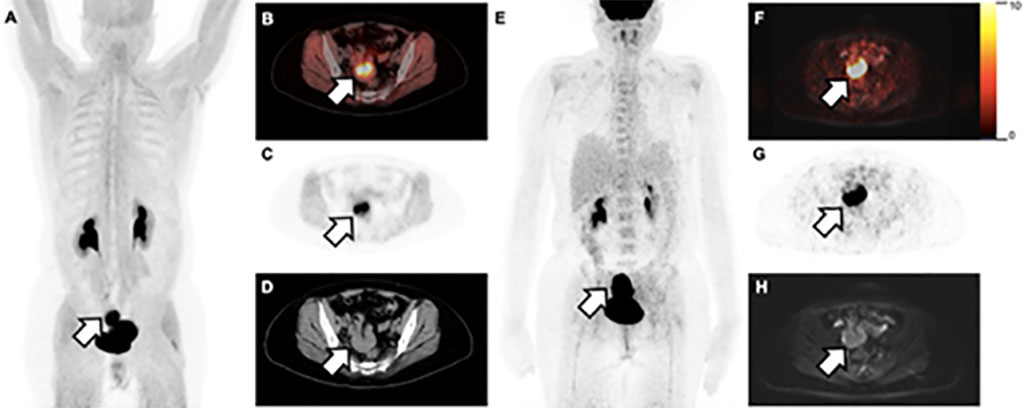New Imaging Method Superior for Diagnosing Multiple Types of Cancer
Posted on 30 May 2023
Cancer-associated fibroblasts play a significant role in tumor development, migration, and progression. A subset of these fibroblasts expresses fibroblast activation protein (FAP), a protein prominently found in solid tumors but hardly present in healthy tissues. This makes FAP an appealing target for diagnosis and treatment using fibroblast activation protein inhibitors (FAPI). Now, two new studies have highlighted the potential of a novel FAPI radiotracer in the diagnosis, staging, and treatment of various types of cancer. The most comprehensive patient study of 68Ga-FAPI PET to date has demonstrated its superiority over the standard 18F-FDG PET in evaluating numerous cancers. Additionally, a newly developed FAPI-targeted treatment has demonstrated its ability to curb tumor growth in common cancers in preclinical trials. These advancements hold great promise for providing more accurate staging and management of cancer patients.
In the first study conducted by researchers at Essen University Hospital (Essen, Germany), 324 patients with 21 different types of tumors underwent 68Ga-FAPI PET over a span of three years; 237 of them also received 18F-FDG PET imaging. Researchers compared the uptake of 68Ga-FAPI PET and 18F-FDG PET across various tumors. They also looked for a potential correlation between 68Ga-FAPI uptake on PET scans and FAP expression in stained tissue samples. The uptake was significantly higher for 68Ga-FAPI compared to 18F-FDG in primary pancreatic cancer lesions and sarcoma, as well as in metastatic pancreatic cancer lesions. 68Ga-FAPI PET proved superior in detecting local, regional, and distant metastatic disease in various cancers, including sarcoma, pancreatic, head and neck, bile duct, lung, and bladder cancers. A positive correlation was also discovered between radiotracer uptake and FAP expression levels in tissue samples.

“68Ga-FAPI PET can be used as a tool for diagnosis of tumors, with the potential for more precise staging and management of patients with the aforementioned tumor entities,” said Nader Hirmas, MD, ScD, a PhD candidate at the Department of Nuclear Medicine at Essen University Hospital. “It could also be used as a tool to screen patients who would potentially benefit from FAP-directed radioligand therapy.”
In the second study, researchers at Purdue University (West Lafayette, IN, USA) developed a new FAP-targeted radiopharmaceutical therapy that targets naturally occurring cancer-associated fibroblasts. Using modern bioanalytical methods, they identified which cells in 34 human tumors of the breast, ovary, colon, and lung expressed FAP. They developed and tested two radiopharmaceutical conjugates, FAP6-DOTA and FAP6-IP-DOTA (the latter contains an albumin-binder for longer circulation and improved tumor uptake), on human cells expressing FAP. Additionally, radiopharmaceutical therapies of 177Lu-FAP6-DOTA and 177Lu-FAP6-IP-DOTA were evaluated in a mouse model. FAP was found to be over-expressed in 5% of human tumor cells, with cancer-associated fibroblasts making up 77% of this FAP-subpopulation and cancer cells constituting 2%. FAP6-IP-DOTA demonstrated high FAP affinity, extended circulation, increased tumor uptake, and minimal retention in healthy tissue. Additionally, single doses of 177Lu-FAP6-IP-DOTA curbed tumor growth by almost 50% in all tested tumor models without causing reproducible toxicities.
“These data suggest that this newly designed FAP-targeted radiotherapy should be capable of treating many more types of human cancers in which the FAP expression is limited to only the cancer-associated fibroblasts,” noted Spencer D. Lindeman, PhD, visiting scholar in the Department of Chemistry at Purdue University. “This could be a powerful and versatile tool for the field of clinical nuclear medicine.”
Related Links:
Essen University Hospital
Purdue University









 Guided Devices.jpg)



